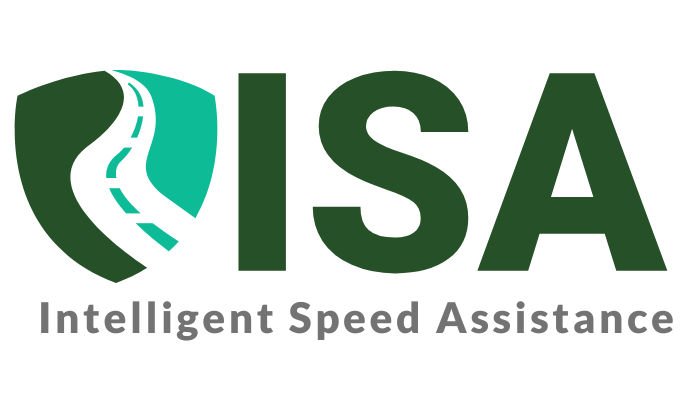In today’s fast-paced world, navigating the roads safely and efficiently is paramount. While driver awareness and adherence to posted speed limits are crucial, technology is increasingly playing a role in enhancing safety and promoting responsible driving habits. This is where Intelligent Speed Assistance (ISA) comes into play.
What is ISA?
ISA is a technology integrated into vehicles that helps drivers maintain safe speeds. It utilizes a combination of GPS, speed limit recognition cameras, or map data to detect the posted speed limit on the road being traveled. When the vehicle exceeds the limit, ISA provides real-time alerts, usually through visual or auditory signals, notifying the driver of the discrepancy. There are different types of ISA systems available, offering varying functionalities:
- Fixed Speed Warning: This system provides a simple alert when the speed limit is exceeded.
- Variable Speed Warning: This system adjusts its warnings based on changing speed limits due to weather conditions, school zones, or construction areas.
- Geofenced Speed Warning: This system utilizes geofencing technology to create virtual boundaries around areas with specific speed limitations, such as school zones or construction sites. When the vehicle enters the geofenced area, ISA issues a warning if the speed limit is exceeded.
Benefits of Utilizing ISA:
The advantages of using ISA are numerous and span across categories like safety, cost savings, and improved driving behavior. Here’s a closer look:
- Enhanced Driver Safety: The most significant benefit of ISA is its contribution to reducing speeding and the associated risk of accidents. By providing real-time feedback, ISA helps drivers maintain awareness of speed limits and avoid unintentional violations. Studies have shown a significant decrease in speeding incidents and accident rates in areas where ISA technology is implemented.
- Reduced Cost of Ownership: Sticking to posted speed limits translates to several cost-saving benefits. Firstly, it helps drivers avoid costly speeding fines and potential license suspensions. Secondly, maintaining a consistent speed contributes to improved fuel efficiency, leading to savings on gas expenses. Additionally, gentler driving habits promoted by ISA can minimize wear and tear on vehicles, potentially reducing maintenance costs.
- Improved Fleet Management: For organizations managing fleets of vehicles, ISA offers significant advantages. Fleet managers can leverage ISA to monitor driver behavior and identify areas for improvement. This data-driven approach fosters safer driving practices and a more responsible driving workforce. Furthermore, consistent adherence to speed limits can help fleets avoid liability issues and minimize the risk of costly legal proceedings.
- Promoting a Culture of Safe Driving: The use of ISA goes beyond individual drivers or fleet operators. It contributes to a broader societal shift towards a safer driving culture. By encouraging responsible speed practices, ISA fosters better road safety for everyone, including pedestrians, cyclists, and other motorists.
Who Can Benefit From ISA?
The benefits of ISA extend to a wide range of drivers and organizations:
- Individual Drivers: Anyone prioritizing safe driving can benefit from the real-time feedback and gentle reminders provided by ISA. This technology can be particularly valuable for new drivers, those unfamiliar with a new area, or motorists who may inadvertently exceed speed limits.
- Fleet Managers: As mentioned earlier, fleet managers can leverage ISA to promote driver safety, improve operational efficiency, and minimize liability risks.
- Volunteer Organizations: Many volunteer organizations rely on drivers to deliver essential services. ISA can help ensure the safety of volunteers and the communities they serve.
- Court-Mandated Drivers: Individuals court-ordered to participate in driver safety programs can utilize ISA to comply with speed limits and potentially demonstrate a commitment to safe driving behavior.
Choosing the Right ISA System:
With growing interest in ISA technology, various manufacturers offer different models. When selecting an ISA system, consider these factors:
- Type of ISA: Fixed, variable, or geofenced, depending on your specific needs.
- Compatibility: Ensure the ISA system is compatible with your vehicle make and model.
- Features: Consider features like visual or auditory alerts, integration with fleet management systems (for fleet applications), and ease of installation.
- Cost: Research different ISA systems and their pricing structures to find a solution that fits your budget.
What’s next for ISA?
Intelligent Speed Assistance technology is constantly evolving. Advances in areas like artificial intelligence and machine learning could lead to even more sophisticated ISA systems in the future. These systems could potentially analyze driver behavior patterns, adapt to real-time conditions, and personalize speed warnings for optimal safety.
Intelligent Speed Assistance offers a compelling solution for promoting safe driving habits across various user groups. By providing real-time feedback and promoting compliance with speed limits, ISA contributes to a safer driving environment for everyone. If you are looking for a proactive approach to road safety, we have all the resources you need to learn more about this amazing new technology.

